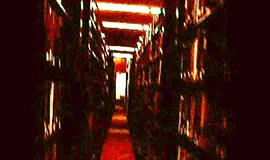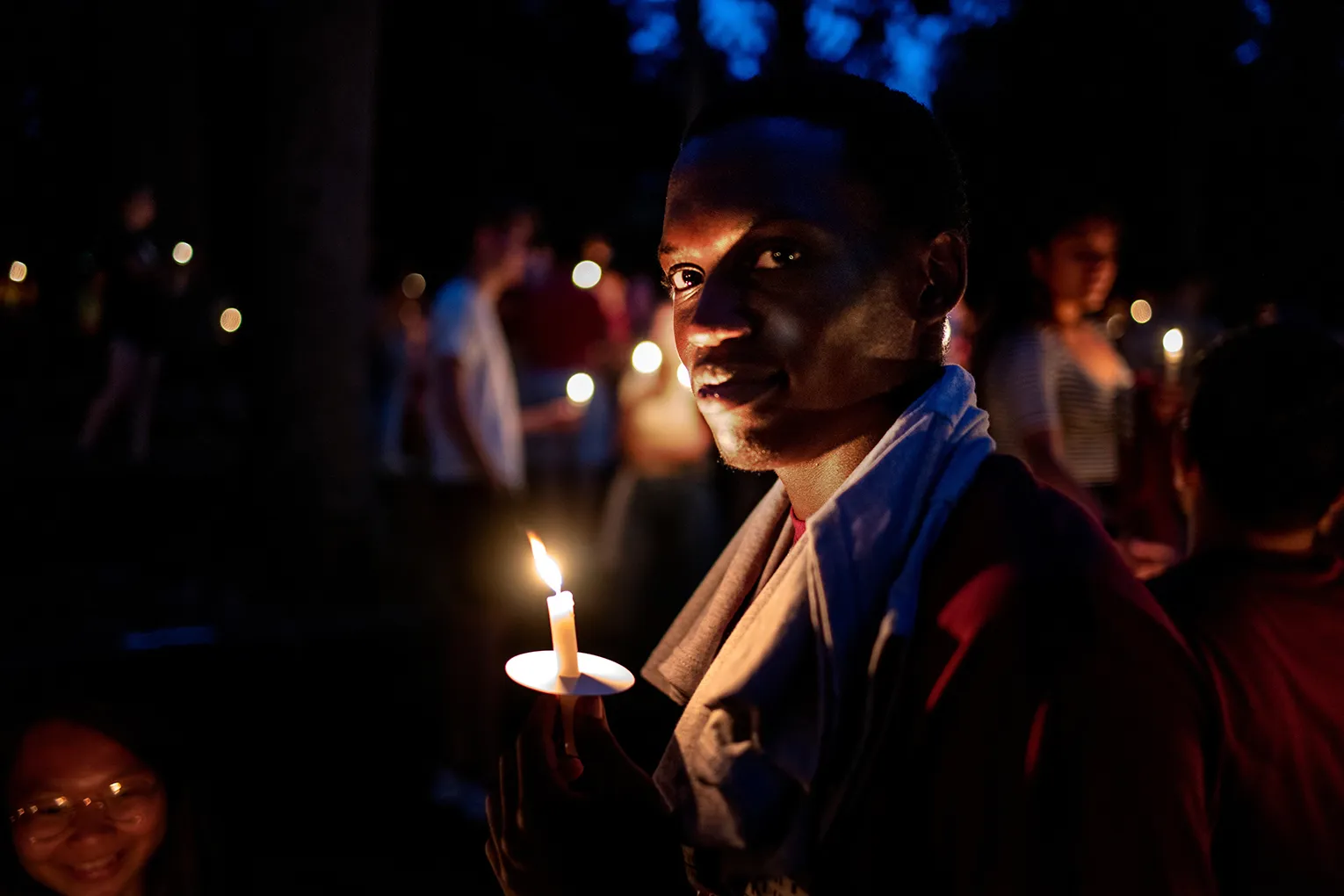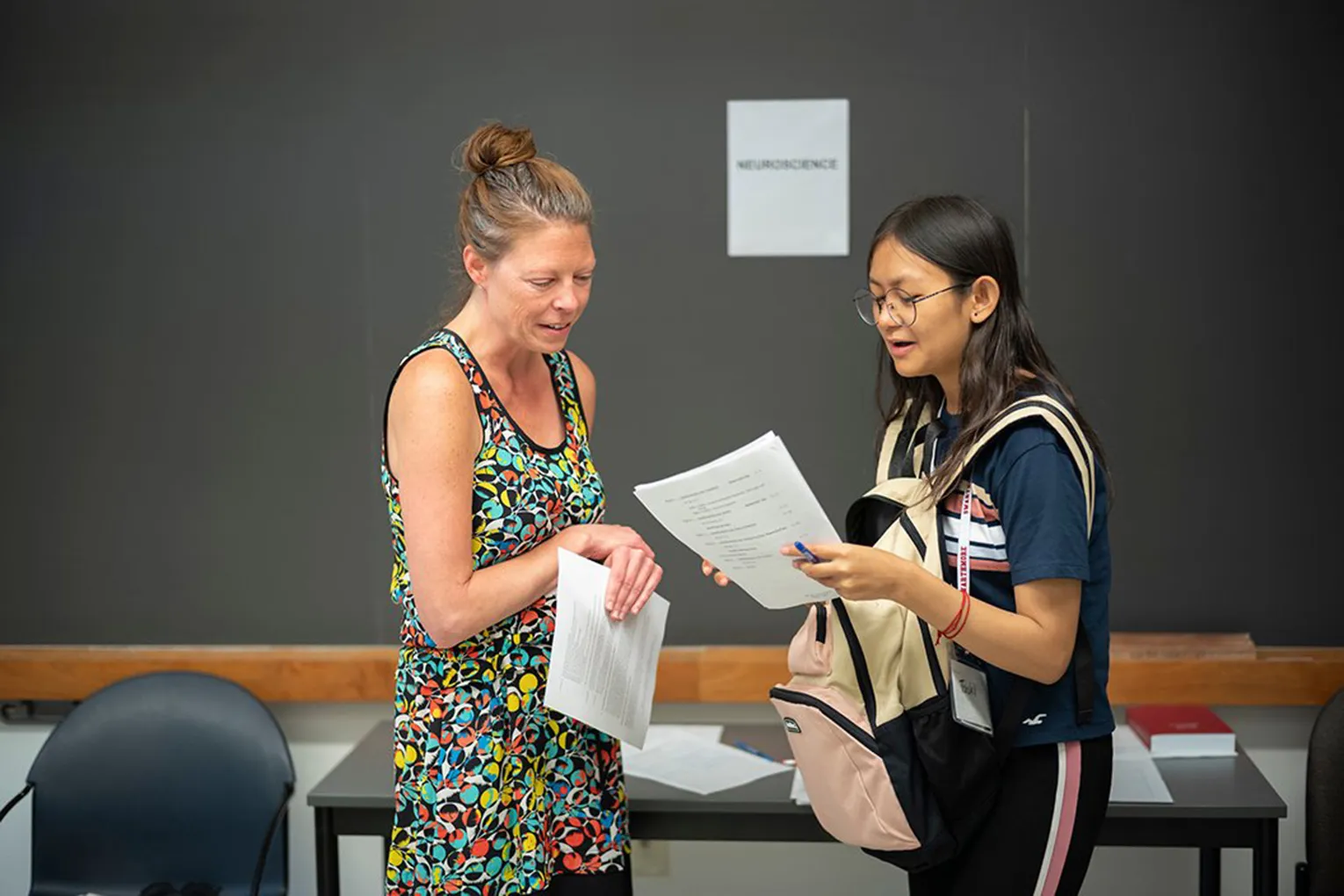Student Projects - Dostoevsky

Amie Chou
RUSS 21
Johnson
Spring 2010
Creative Capstone Project
Watch the film first! ☺ I hope it is enjoyable (or at least interesting, as it is rather creepy).
Film Abstract
The film is a visual exploration of the frame of Raskolnikov's mind after he committed murder, from the novel Crime and Punishment by Dostoevsky. Although he commits the murder in the name of his idea of the "extraordinary man", his mind immediately becomes tainted by wracking guilt after killing the old pawnbroker. The film aims to capture the increasing inner torment he undergoes as he is unable to resolve his convictions of the "extraordinary man" idea with his great guilt. There is a clear disconnect between his rationality (his ideas) and spirituality (his guilt) - which results in a deep moral dilemma. Torn by this "split", his moral dilemma results in a psychological hell that drives him to delirium.
In the beginning of the film, Raskolnikov is walking in a maze of bookshelves, which represents how consumed he is by his ideas. Yet the image in tainted by a hint of red, which increases as the film goes on. This represents his feeling of guilt, which is further emphasized by flashing images of the old woman he killed, an axe, and blood. The decreasing realness of the images, which become warped, shaken, changed in colour, and ultimately, unrecognizable as rows of bookshelves, reflects his fall into delirium as he becomes more and more absorbed in psychological torment. Near the end, an image in which the bookshelves on the two sides seem to keep pushing towards a center darkness while Raskolnikov walks into the darkness also represents how his ideas traps him in his dark psychological hell.
At the end, a voice calls him out of the darkness - Sonya's. Sonya is the source of Raskolnikov's salvation at the end of the novel. Although I originally filmed all of Sonya in the last scene, I decided to cut this part out. Instead, the film fades out when Sonya's bare feet appear. I wanted the bare feet to symbolize humility. After all, Raskolnikov is only able to achieve redemption after he lets go of all his pride, his desires of wanting to be respected or even "worshipped" for his good deed (intentions).
Acknowledgments:
I thank Nicholas Allred, Elliot Weiser, Paul LaFreniere, Elizabeth Keck, and Anna Stitt for volunteering their voices, and Anna Stitt for allowing me to film her.
Image Sources
"Al jaabari massacre frame." N.d. JPG file.
"Blood Spatter." N.d. JPG file.
"Bloody axe." N.d. JPG file.
"Knitting Old Lady." N.d. JPG file.
"Resized luigiznasi wikimedia blood." N.d. JPG file.



